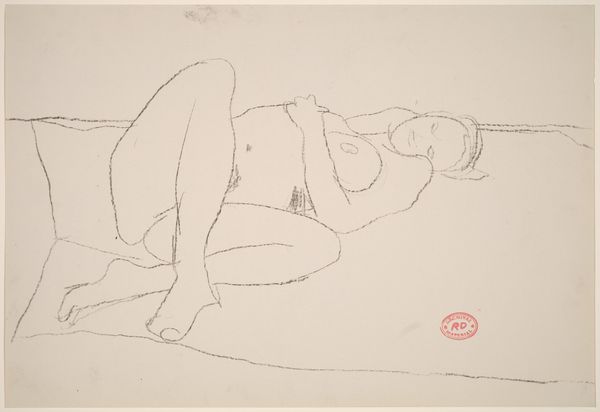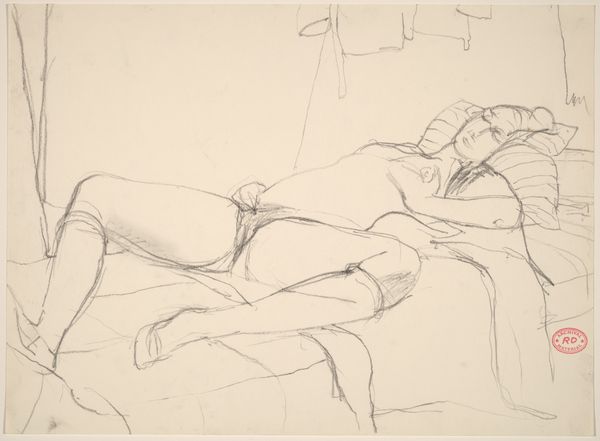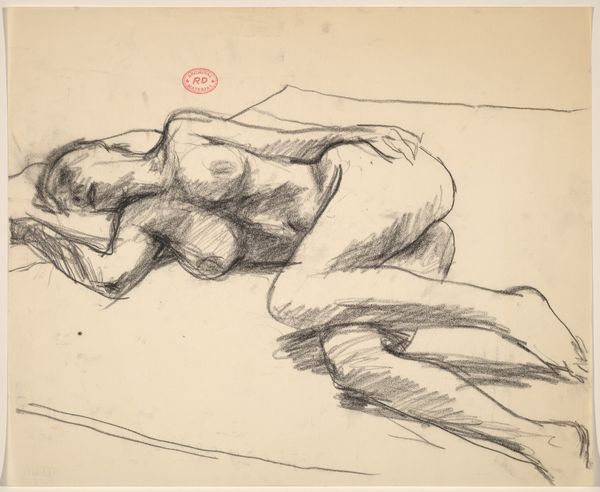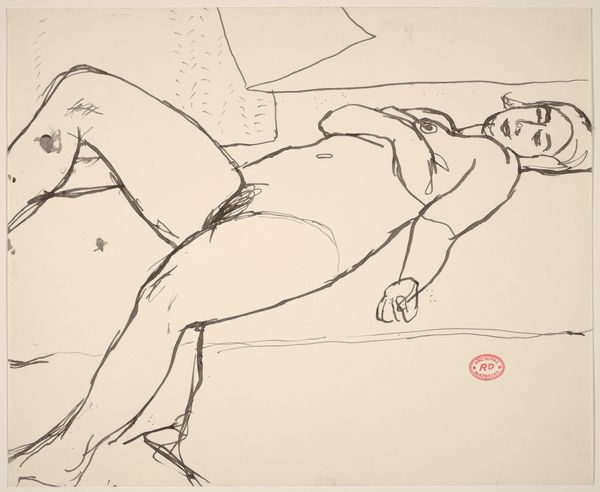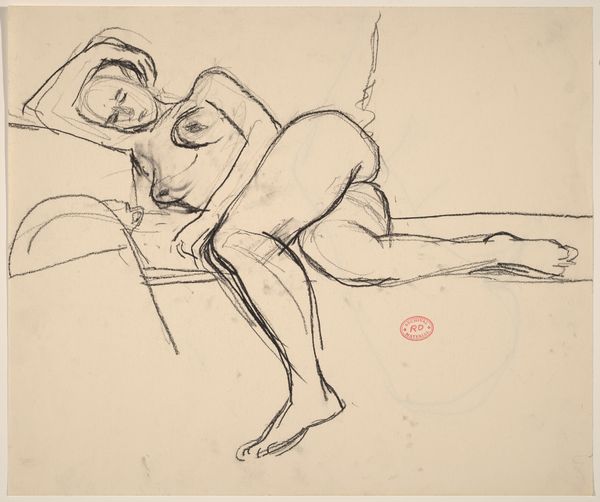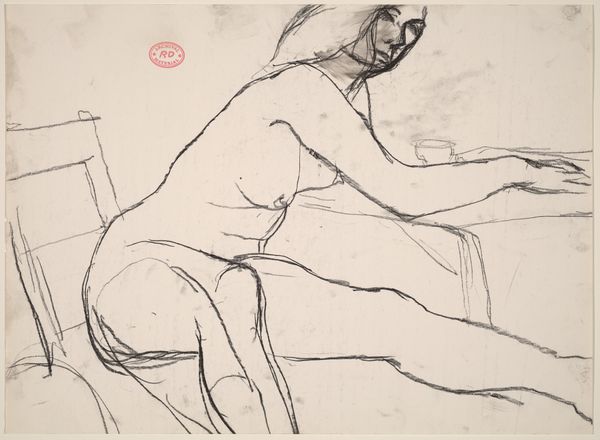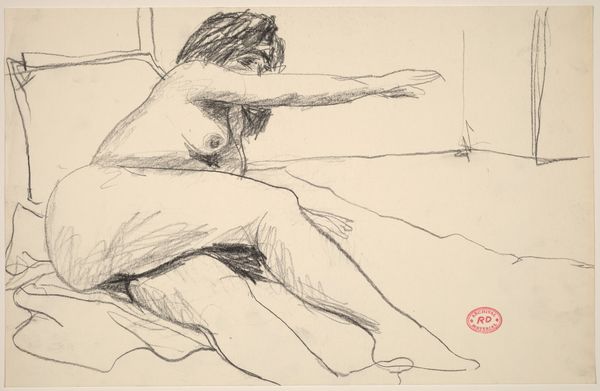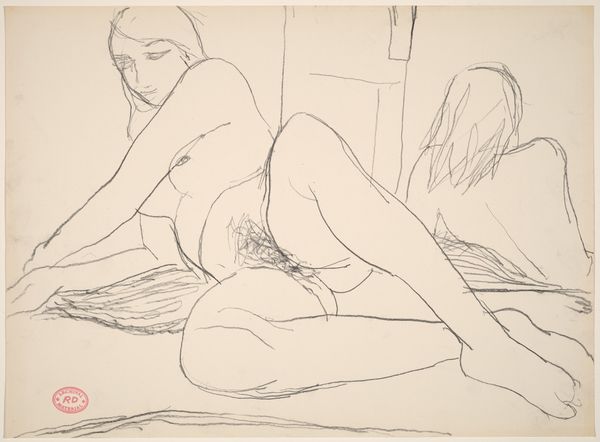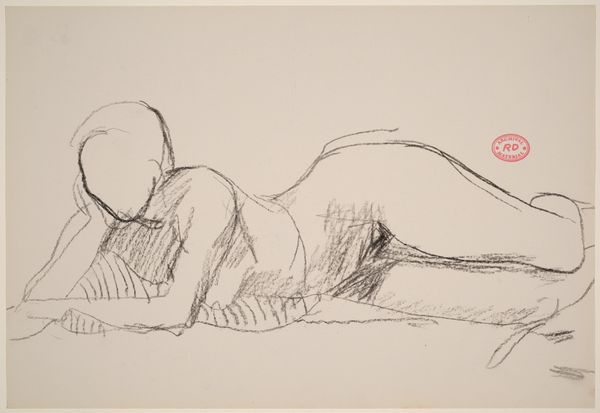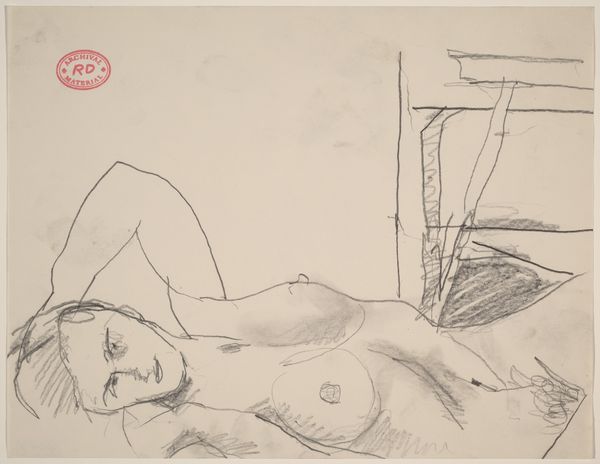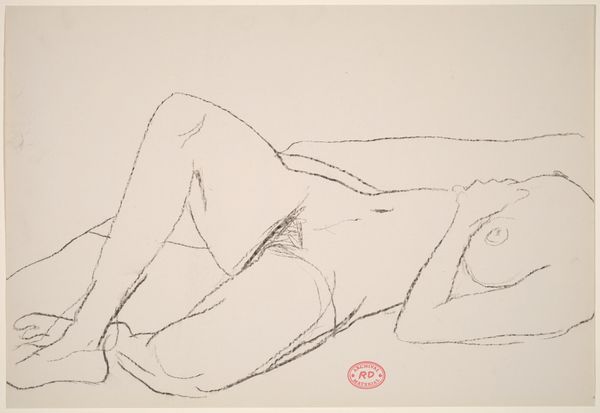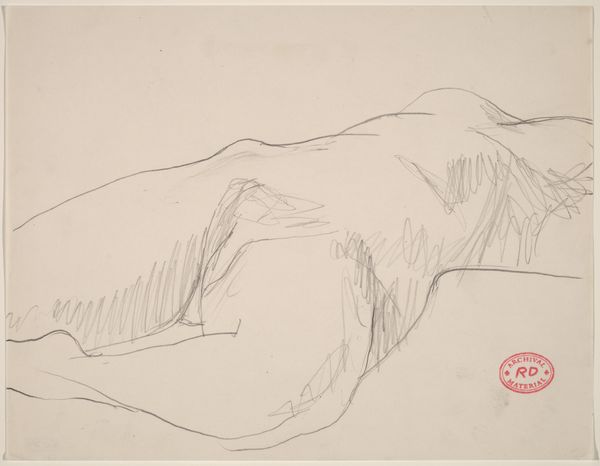![Untitled [female nude resting on floor with head on hand] by Richard Diebenkorn](/_next/image?url=https%3A%2F%2Fd2w8kbdekdi1gv.cloudfront.net%2FeyJidWNrZXQiOiAiYXJ0ZXJhLWltYWdlcy1idWNrZXQiLCAia2V5IjogImFydHdvcmtzLzNhOGFiYWJjLTYyN2YtNDliNC1iZjliLTcyMzY2Yjk4YmEyOC8zYThhYmFiYy02MjdmLTQ5YjQtYmY5Yi03MjM2NmI5OGJhMjhfZnVsbC5qcGciLCAiZWRpdHMiOiB7InJlc2l6ZSI6IHsid2lkdGgiOiAxOTIwLCAiaGVpZ2h0IjogMTkyMCwgImZpdCI6ICJpbnNpZGUifX19&w=3840&q=75)
Untitled [female nude resting on floor with head on hand] 1955 - 1967
0:00
0:00
drawing, pencil
#
drawing
#
ink drawing
#
pen sketch
#
pencil sketch
#
figuration
#
bay-area-figurative-movement
#
pencil
#
academic-art
#
nude
Dimensions: overall: 35.2 x 43.2 cm (13 7/8 x 17 in.)
Copyright: National Gallery of Art: CC0 1.0
Curator: Before us is Richard Diebenkorn’s “Untitled [female nude resting on floor with head on hand],” which he created sometime between 1955 and 1967. It's rendered with pencil on paper. Editor: My initial reaction is one of introspection. The soft lines and limited shading create a very gentle, almost melancholic mood. It's interesting how the artist captures the figure's pose; it conveys both vulnerability and self-containment. Curator: It’s true. Nudes during this period were a loaded subject—often less about artistic skill, but an avenue for the male gaze in both art and popular culture. How might Diebenkorn, known for his abstract expressionism, disrupt this historical trend with the very direct approach you noticed in his marks and lines? Editor: Precisely! I see a delicate interplay between line and negative space. It directs the eye, yet, at the same time, reveals an interest in simplicity. Note, too, how he uses perspective. Diebenkorn plays with how forms intersect with that stark plane on the background, further flattening our reading of the depth and volume. Curator: Yes, these pieces from Diebenkorn, like those of many California artists, are less focused on the prevailing formal conventions being pushed in New York circles at that time. While issues of abstraction or representation still lingered, many sought to return the body to visual vocabularies in subtle ways, especially amid burgeoning social change in the late 1960s. What does the composition of line tell us about that possibility? Editor: It creates a dialogue between absence and presence. What you notice, what he doesn't add...it invites you to consider it complete by letting go. Curator: So, do we get to see the figure on her own terms through this type of “letting go?” Editor: Perhaps, or on ours, right? But maybe that invitation is precisely what complicates earlier art traditions and allows new visions to emerge. Curator: Thanks for untangling that knot! It certainly gives us a new angle to see what’s possible for artists at this juncture. Editor: The pleasure was mine, illuminating those layers.
Comments
No comments
Be the first to comment and join the conversation on the ultimate creative platform.
